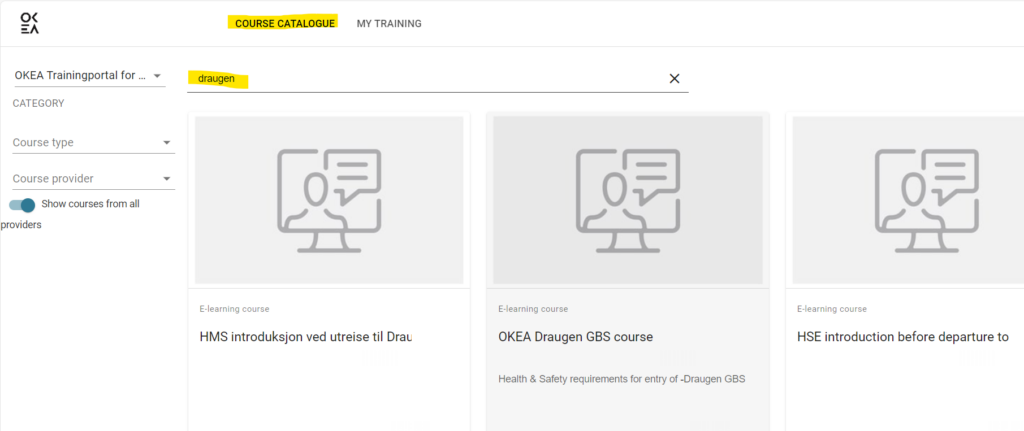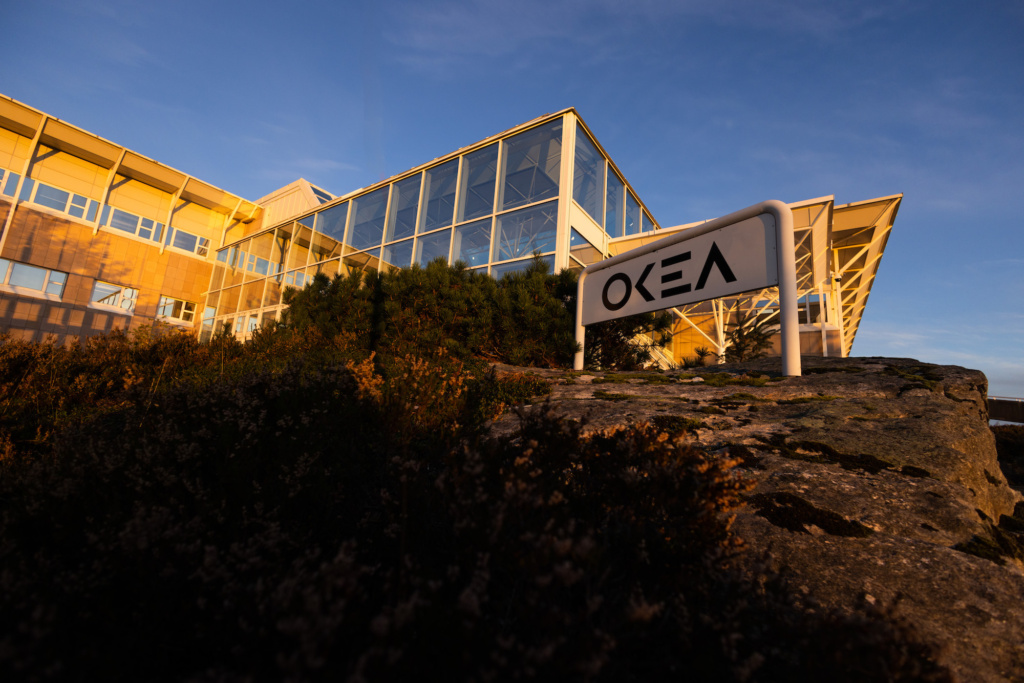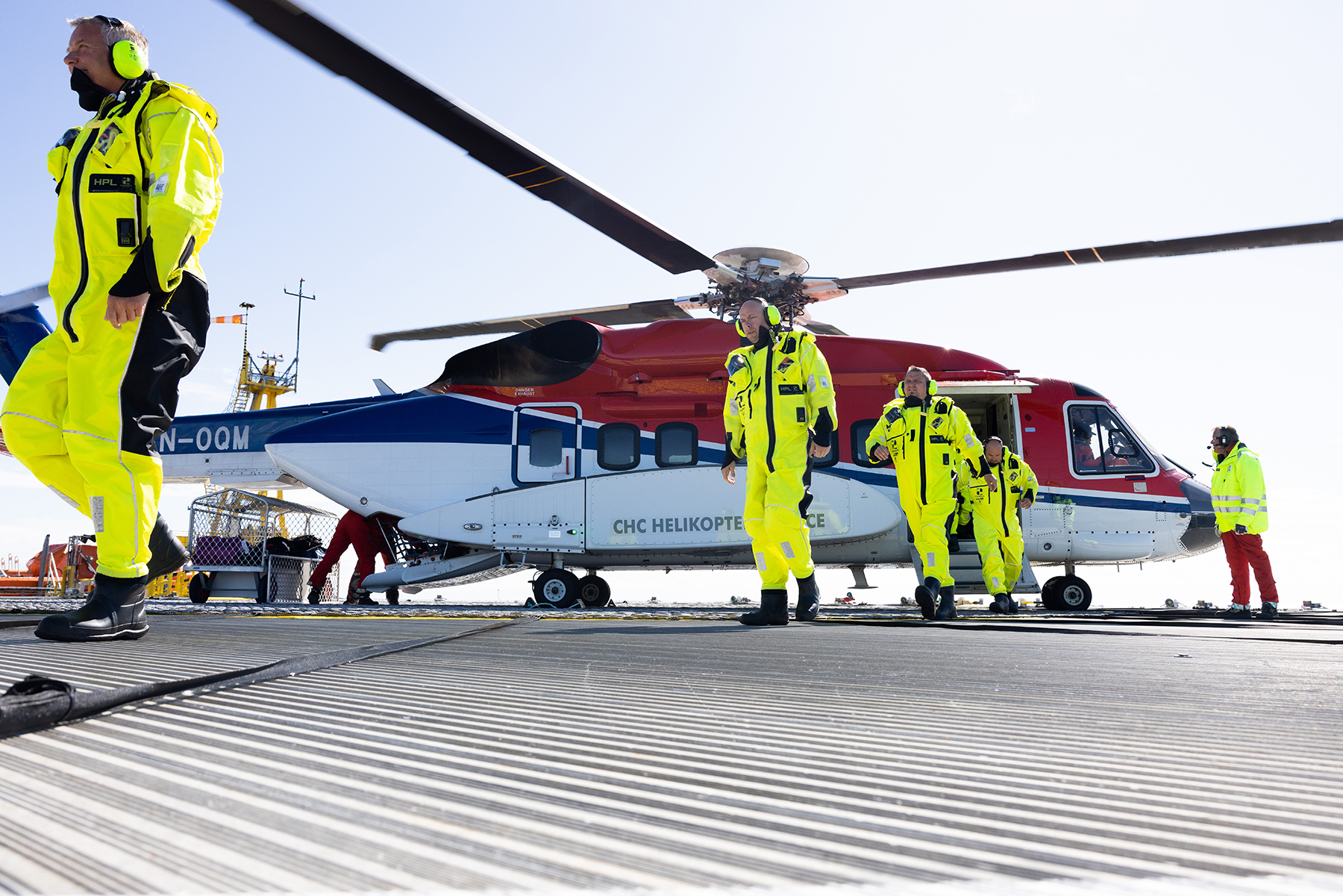Last updated: 01.07.2025
————————————
To minimise the risk of infection on the platform, we kindly ask all travellers to contact the onboard nurse before departure if:
- You have recently been ill, especially with symptoms such as stomach upset or vomiting.
- Someone close to you (e.g. family members or housemates) has recently experienced such symptoms.
This is an important measure to help protect both yourself and others onboard. Thank you for your cooperation and consideration.
Brage nurse: +47 51 93 47 98
Draugen nurse: +47 71 56 46 71
Deepsea Yantai nurse: +47 51 00 80 13
Fixed Helicopter Schedule
Online flightschedule next 6 days from heliport.no.
Flight time 30 minutes. Departure and arrival time onshore.
Bergen – Flesland:

Valid from 22.7.2025:

Kristiansund – Kvernberget:

Valid from 22.7.2025:

* Kristiansund – Draugen: New helicopter schedule departure 11:00 in period between 22.July – end August. Period may be changed and expanded on short notice.
Preparation before flight / Requirement
Before departure
All courses and personnel data must be registered or updated in MyDaWinci. MyDawinci provides an overview of your personal data, booking / travel history, requirements, and more. Uploaded documents will be checked within the next working day.
Travel requirements

- Basic offshore safety course (BOSIET/GSK)
Safety course from UK or Holland need additional Escape Chute documentation.
STCW safety course only approved for movable installations. - Offshore health certificate
Anyone who has been on sick leave for 8 weeks or longer or has reason to believe that he/she no longer satisfies the health requirements, shall consult a petroleum doctor who will assess the need for a new health certificate. [More info] - (*) Work permit (AT) and Safe Job Analysis (SJA) for fixed installations. (Not required for guest)
- (*) Draugen shaft (GBS) course for dedicated personnel in emergency team and project workers need to be completed before check-in.
- (*)HSE Introduction Draugen (All new personell and personell with more than 12 months absence).
* Create your user profile in OKEA Training Portal and assign missing courses (AT/SJA, GBS & HSE) via course catalogue. Type Draugen to find related course.

Special invited guests requirements:
– Offshore health certificates
– Helicopter underwater escape training (HUET) including EBS training
For technical support, contact;
Mail: support@mintragroup.com | Phone: +47 24 15 55 55.
Residence permit
Personnel outside EU/EEA need a residence permit when travelling to a fixed installation. Please note! Some persons do not need a residence permit in order to work offshore. More information at UDI web page.
Helicopter Cargo Guidelines
General Instructions:
- All freight should be transported by boat whenever possible.
- If helicopter transport is necessary, all shipments must be pre-approved with a Dawinci cargo number.
For Draugen:
- Request and Approval: Must be obtained from the Draugen Material Coordinator.
- Delivery: Shipments must be delivered to the OKEA supply base Kristiansund (Vestbase) at least 3 hours before the helicopter flight, accompanied by the Dawinci cargo number.
For Brage:
- Request and Approval: Must be obtained from Logistics Coordinator.
- Delivery: Shipments must be delivered to Bergen Heliport (Flesland) at least 2 hours before the helicopter flight, accompanied by the Dawinci cargo number.
Check-in / Heliport at least 1 hours prior flight.
Make sure you are ready for check-in at the heliport at least 60 minutes before departure. Follow the instructions at the heliport for check-in, bag drop, ID check/departure. In the event of announced delays; You must check in according to the regular departure or at short notice (e.g. 15-20 minutes) be ready for the new check-in time if changes occur (if no other information is given).
Helicopter departures can be followed at the heliport website.
- Mobile phone must be switched off (flight mode not accepted) before checkpoint and should be kept inside of the suit, or stored in your luggage.
- Medicine/dietary supplements:
Non-prescription medication must be in a sealed package. An unbroken blister in a pack is considered sealed packaging.
Prescription medication (medicines) must be in the original packaging and labelled.
A medication form must be filled out if the passenger does not have a permanent carry-on permit. This form is available at the helicopter terminal. The medication must be placed in a medication envelope, which is available at the helicopter terminal. When checking in luggage, the medication envelope and form must be delivered to the security staff, who send a copy of the form separately to the offshore nurse.
Fill in the medication form at the heliport and deliver it with your luggage at bag drop. - Luggage: Max weight and size per item: 10 Kg / 60x50x30 cm. Make sure that electronic equipment is packed properly. Soft bag is preferred.
Personal equipment/tools shall be checked in at the freight department no later than 1.5 hours before departure. Due to security reasons, it is not allowed to leave luggage in the open area. All luggage must be delivered to the bag drop.
NB! If your luggage is delayed, inform check-in counter or security control and fill in the form for delayed luggage. (Permission for inspection without presence).
Valid identification (with optical element):
- Passport
- Drivers license (digital version can be used as emergency identification if another ID cannot be obtained. Requires verification)
- National ID-card
Prohibited items:
An overview of prohibited and regulated items can be found in Offshore Norge guideline 003 chapter 5. Items not defined in chapter 5 but prohibited are:
- Power banks
- E-cigarettes
- Drones (Must obtain an approved carry permit in advance.)
It is permitted to ship a maximum of 2 extra sets (the number of batteries required to run the device) of lithium batteries, when shipped along with associated equipment and registered as personal freight.
Bag drop
After check-in, proceed to the bag drop. You will not have access to your luggage after it is delivered. Do not place ID cards or money in your checked luggage.
ID control and secure zone
ID check, passenger check, and possible drug check may be conducted if there is suspicion.
In the secure zone, proceed to the survival suit delivery area. Hearing protection will be provided for use when embarking and disembarking the helicopter. Follow further directions and proceed to the gate for the security film.
At the gate
Shoes (or jackets) should be placed in a dedicated shoe bag. No luggage is allowed in the helicopter cabin. Your mobile phone must now be turned off (flight mode is not accepted).
In flight / arrival destination
In the helicopter
During the helicopter flight, you must use the headphones provided by the helicopter company. Follow the instructions given by the pilots.
Arrival offshore
Follow the instructions from the helideck personnel. You will receive the necessary information on board the installation.
HSE Introduction
If you are new on board or if it has been more than 12 months since your last stay, an additional HSE introduction will be given upon arrival at the installation.
Each installation may have extra pre-flight HSE information, as mentioned below.
- DRAUGEN: HSE Introduction video [Trainingportal].
- BRAGE: HSE Brage (Pre-flight meeting at Flesland Heliport (for dedicated personnel)
Implementation of new requirement for offshore travellers, March 1, 2024, measuring of shoulder width (XBR)
Background and Regulation
On July 1st 2019, the Civil Aviation Authority adopted the EU regulation regarding requirements for evacuation capabilities in helicopters. The requirement shall ensure that all passengers have access to sufficiently large emergency exits so that evacuations can be conducted safely and efficiently.
XBR stands for “Extra Broad” and the measurement of 56 cm is an internationally established standard. This measurement is unrelated to health requirements for individuals working in the petroleum industry (“health certificate”). Passengers with shoulder width exceeding 56 cm is not disqualified from traveling offshore.
Measurement:
The measuring procedure will consist of an initial a “screening” of shoulder width. The passenger will be asked to stand against a real- sized wall-mounted poster to determine whether he/she falls within or outside the definition of XBR. If this screening is insufficient to determine the category, an accurate measurement will be taken using a handheld measuring device.
Measurement will be included as part of required offshore safety training / refresh training at the training centers. This may also be performed at the heliport on the actual day of departure prior to check in and offshore travel.
Registration and Data privacy;
The measurement results will be recorded in Dawinci and linked to the Dawinci ID. There are only two possible registration options in the system: either Regular or XBR.
This information is stored to allow the helicopter operator to verify that the number of passengers categorized as XBR does not exceed the available number of seats. The information will also be used to ensure the distribution of arm tags at the handout of survival suits. The registration in Dawinci has been assessed to comply with GDPR regulations.
Practical implication and Seat Configuration.
Those falling under the XBR category will receive an arm tag that should be worn on the outside of the survival suit. The tag shall be kept attached to the suit until the offshore travel is over and the suit is handed in at the heliport.
Seats available for XBR passengers will be marked with a pattern corresponding to the arm tag.
Useful links:
OKEA Air Transport / Contact us:
Phone: +47 417 74 080
Mail: lufttransport@okea.no


